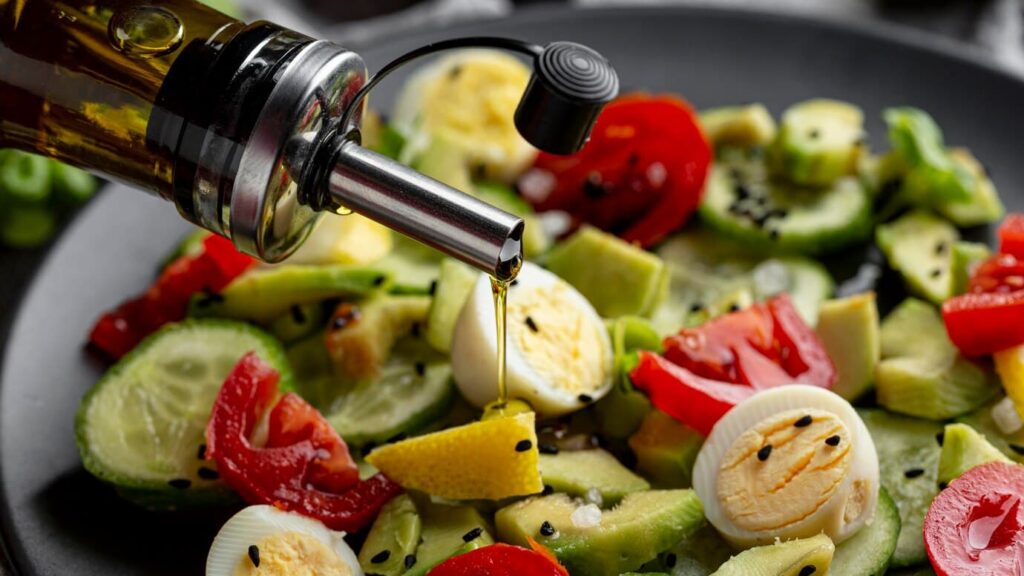
Choosing the right cooking oil is one of the most underrated yet impactful decisions in your kitchen. It affects not only the flavor of your dish, but also its texture, nutritional value, and even how well it cooks. While oils often seem interchangeable, each one has its own personality—smoke point, fat profile, taste, and best use case.
This article is your kitchen-side guide to using cooking oils with more intention and expertise. Whether you’re pan-frying fish, baking banana bread, or drizzling over a salad, there’s an oil that will elevate your dish in subtle but powerful ways.
Understanding the Basics: Smoke Point and Flavor Profile
Before diving into specific oils, it helps to understand two key factors: smoke point and flavor profile.
The smoke point refers to the temperature at which oil begins to break down and emit smoke. Oils with higher smoke points are best for high-heat cooking methods such as frying, roasting, or stir-frying. Lower-smoke-point oils work well in dressings, dips, or gentle cooking where flavor retention is essential.
The flavor profile of oil matters just as much. Neutral oils like canola or grapeseed don’t interfere with the taste of the dish, while flavor-rich oils such as extra-virgin olive or sesame oil add distinct character and depth.
Understanding how these elements interact with heat and ingredients is the secret to better cooking.
Best Oils for High-Heat Cooking
When cooking at high temperatures—like roasting vegetables, pan-searing proteins, or deep-frying—you need oils that stay stable and don’t impart bitterness.
Avocado oil is a top choice for these tasks, thanks to its remarkably high smoke point and buttery, clean taste. Refined peanut oil, often used in Asian cuisine, brings both heat tolerance and subtle nuttiness to the pan. Grapeseed oil, though less common, offers a neutral base with a good balance of polyunsaturated fats. For those who prefer something lighter, refined safflower and sunflower oils provide excellent stability with minimal flavor intrusion.
Oils for Baking: Structure, Texture, and Subtlety
In baked goods, oil contributes more to texture than taste. It affects moisture levels and mouthfeel while remaining mostly in the background.
Canola oil is a go-to option due to its light profile, making it ideal for muffins, cakes, and quick breads. Light olive oil—not to be confused with extra virgin—adds richness and pairs well with savory bakes or Mediterranean-style cakes. For vegan or tropical-style baking, coconut oil (refined or unrefined) brings moisture and a subtle sweetness that complements banana, chocolate, and citrus flavors beautifully.
Strongly flavored oils like sesame or walnut should generally be avoided in baking unless the recipe specifically calls for them.
Best Oils for Dressings and Finishing

When oil is used raw—as in dressings or drizzled over hot dishes—it needs to stand on its own. Flavor, aroma, and mouthfeel take center stage.
Extra-virgin olive oil is the classic here, with its bold, peppery complexity making it perfect for everything from green salads to bruschetta. For something deeper and more earthy, toasted sesame oil adds richness to Asian-style slaws and noodle dishes. Walnut and hazelnut oils shine in fall-themed salads, particularly those with apple, roasted squash, or blue cheese. Flaxseed oil, rich in omega-3s, works best in cold applications like smoothies or light vinaigrettes due to its delicate structure.
Best Oils for Flavor Infusion and Experimentation
Some oils become canvases for creativity. Infused oils—made by steeping ingredients like garlic, herbs, or spices—can add depth to marinades, roasted vegetables, or finishing drizzles.
For instance, rosemary and garlic infused in olive oil complement roasted potatoes or chicken. Lemon zest in grapeseed oil gives seafood or light vegetables a fresh lift. Chili and sesame oil become a spicy drizzle for dumplings or noodles. Smoked paprika in sunflower oil adds a bold kick to sandwiches or vegan mayo.
Keep in mind that infused oils should be refrigerated and used within a week to ensure freshness and food safety.
One Oil Doesn’t Fit All
The biggest myth in home cooking is the idea that one bottle of oil can do it all. While it might be convenient, this approach limits the range and quality of your cooking. Having a small but diverse rotation of oils allows you to match each dish with the right characteristics.
Here’s a simple oil rack setup to cover most needs:
- Neutral high-smoke-point oil (e.g., avocado or grapeseed)
- Mild oil for baking (e.g., canola or light olive oil)
- Bold-flavored oil for raw use (e.g., extra virgin olive oil)
- Specialty oil for finishing or experimenting (e.g., sesame or walnut)
Final Thoughts
Cooking oils aren’t just fat—they’re functional ingredients with unique properties and personalities. Choosing the right oil for the job elevates flavor, supports proper cooking technique, and enhances the health profile of your meals. When you match the oil to the recipe with intention, your food doesn’t just taste better—it reflects a deeper awareness of how small decisions shape big results in the kitchen.
Next time you’re prepping dinner, pause before pouring. That splash of oil could be the subtle detail that transforms your dish from average to exceptional.